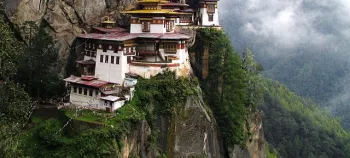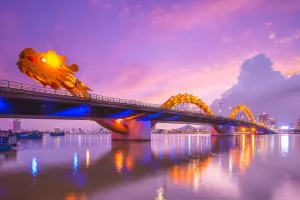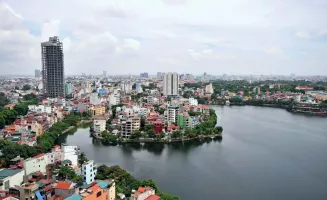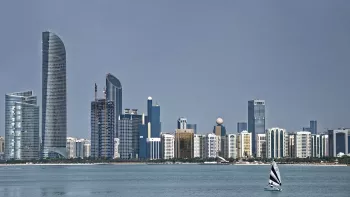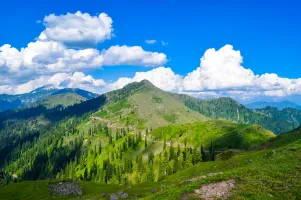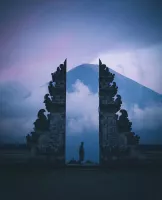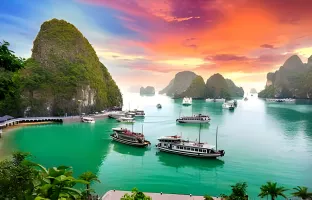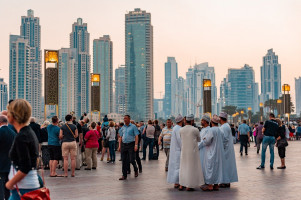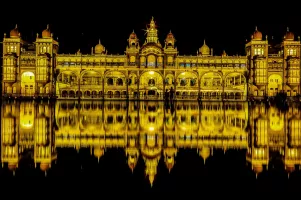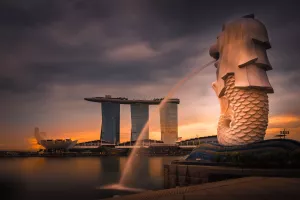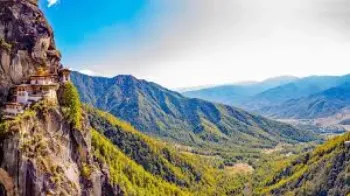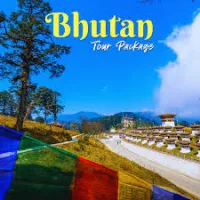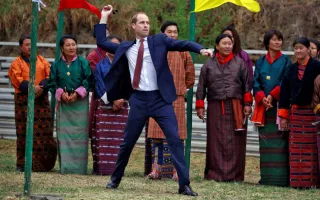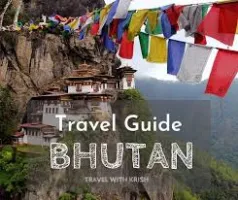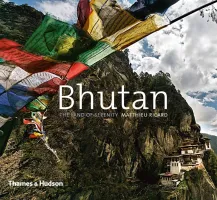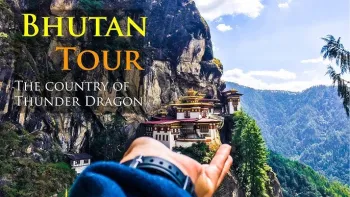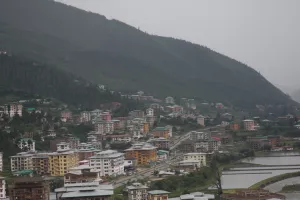

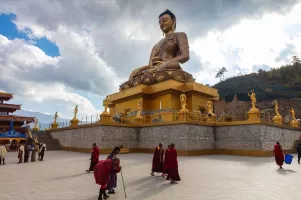
About Package
Book you lucrative tour package of Bhutan for 6 Nights, 7 Days offered by Wonder World Travels at 40,000 /Per Person . Find detailed day wise itinerary of Bhutan tour package below which will be further customized once you enquire with us and share you trip details.
Enquire for an exciting Bhutan sightseeing tour which will cover some of the most exciting places to visit near and at Bhutan.
If you have any query regarding booking of your Bhutan tour package then please call us at our 24x7 helpline number present at our profile page - Wonder World Travels and to book your tour to Bhutan please send your trip details in our tour package booking form.
To enjoy your Bhutan trip don't forget to get the following activites added in your Bhutan itinerary
Package Incluslion
- Thimphu Sightseeing
- Taktshang Monastery
- Paro Sightseeing
Package Summary
To enjoy you Bhutan trip don't forget to get the following activites added in your Bhutan
Detailed Day Wise Itinerary
- Day 1 -Arrival at Bagdogra (IXB) Airport / NJP Railway Station and Transfer to Phuentsholing
![]() Transport Arrival at Bagdogra (IXB) Airport / NJP Railway Station and Transfer to PhuentsholingMeet & Greet on arrival at NJP Railway Station / IXB Airport and transfer to Phuentsholing - The Gateway of Bhutan by Road from India. It is a thriving commercial center on the northern edge of the Indian Plains. On arrival check in at the hotel. Overnight stay at Phuentsholing hotelHotel Type
Transport Arrival at Bagdogra (IXB) Airport / NJP Railway Station and Transfer to PhuentsholingMeet & Greet on arrival at NJP Railway Station / IXB Airport and transfer to Phuentsholing - The Gateway of Bhutan by Road from India. It is a thriving commercial center on the northern edge of the Indian Plains. On arrival check in at the hotel. Overnight stay at Phuentsholing hotelHotel Type
4 StarHotel Hotel Check-in PhuntsholingHotel Check-in Phuntsholing Park Hotel Bhutan or SimilarHotel Type
4 StarEnd of Day - Day 2 Transfer from Phuentsholing to Thimphu
![]() Activity Transfer from Phuentsholing to ThimphuAfter breakfast, complete your Visa / Permit formalities assisted by our representative (in case if your permit is not done on arrival day). Our representative will assist you in boarding your vehicle for transfer to Thimphu.
Activity Transfer from Phuentsholing to ThimphuAfter breakfast, complete your Visa / Permit formalities assisted by our representative (in case if your permit is not done on arrival day). Our representative will assist you in boarding your vehicle for transfer to Thimphu.
On arrival check in to the hotel. Overnight stay at Thimphu hotelHotel Hotel Check-in ThimphuHotel Check-in Thimphu Hotel Dralha or SimilarHotel Type
4 StarEnd of Day - Day 3 Full Day Thimphu Sightseeing
![]() Activity Full Day Thimphu SightseeingAfter breakfasts proceed for full day sightseeing visiting:
Activity Full Day Thimphu SightseeingAfter breakfasts proceed for full day sightseeing visiting:
National Memorial Chorten stupa was built in 1974 in the memory of Bhutan's third King, His Late Majesty, King Jigme Dorji Wangchuk, who is popularly regarded as Father of modern Bhutan. The paintings and statues inside the monument provide a deep insight into Buddhist philosophy.
Tashichho Dzong also know as "fortress of the glorious religion", it was initially built in 1641 and later rebuilt in its present form by King Jigme Dorji Wangchuk in 1965. The Dzong houses, main secretariat building which houses the throne room of His Majesty, the King of Bhutan. The National Assembly Hall is housed in a modern building on the other side of the river from the Dzong. During the warmer summer months, the monk body headed by His Holiness, the Je Khenpo, makes its home in the Dzong.
Buddha Point (Kuensel Phodrang) is located at a short drive from Thimphu city centre, visitors can get a good overview of the Thimphu valley from the Buddha point (Kuensel Phodrang). You can pay your obeisance and offer prayers to the Buddha, the largest statue in the country and then walk around and take a glimpse of the valley.
Changangkha Lhakhang is a fortress like temple and monastic school perched on a ridge above Thimphu, south of Motithang. The temple was established in 12th century on a site chosen by Lama Phajo Drugom Shigpo, who came from Tibet. The central statue here is Chenrezig in a manifestation with 11 heads. From temple courtyard, there is fascinating view of Thimphu valley.
Motithang Takin Preserve located in the Motithang district of Thimphu, Bhutan is a wildlife reserve area for takin, the national animal of Bhutan
Drubthob Goema/Zilukha Nunnery is perched on a promontory, overlooking picturesque Trashichhoedzong and Golf course, it is the only nunnery in capital known as
Zilukha Anim Dratsang, once belonged to the Drubthob (Realized one) Thang Thong Gyalpo often referred to as The King of the open field (In the early 15th century with his multiple talents he popularly became the Leonardo da Vinci of the Great Himalayas). You may interact here with some of the nuns who have devoted their life to spirituality and Buddhism.
Institute for Zorig Chusum is commonly known as Arts & Crafts School or Painting School, the Institute offers a six-year course on the 13 traditional arts and crafts of Bhutan. On a visit, one can see students learning the various skills taught at the school (Closed on Saturday , Sunday, National Holiday & During Summer & Winter Vacations).
National Textile Museum was opened under the patronage of Her Majesty the Queen Ashi Sangay Choden, Bhutanese textile have reached new heights as one of the most visible distinct art form. The textile museum has opened its exhibition on six major themes - warp pattern weaves, weft pattern weaves, role of textiles in religion, achievements in textile arts, textiles from indigenous fibers and the royal collection. The crowns of Bhutan's Kings, namzas (dresses), the first version of Royal Crown and other accessories used by members of Royal family can be found in the museum. The goal of the museum is to gradually become a center for textile studies that will carry out documentation, research and studies on Bhutanese textiles (Closed on Saturday, Sunday & National Holiday).
Zangthopelri Lhakhang Monastery present structure was built in 1960s and although lacking the charm of many of the older temples, Zangthoo pelri still possesses some impressive murals and art treasures and is worthy of a visit. The site of the temple was a former battle ground, and the temple was constructed there in order to pacify energies.
Later return to the hotel for overnight stayEnd of Day - Day 4 Transfer from Thimphu to ParoActivity Transfer from Thimphu to ParoAfter breakfast, check out of your hotel and drive to Paro. This beautiful valley is one of the widest in the kingdom, with fertile rice fields and a clear river. After checking into your hotel, enjoy your time at leisure. Overnight stay in Paro.Hotel Hotel Check - in ParoHotel Check - in Paro Shomo Chuki Resort or SimilarHotel Type
5 StarEnd of Day - Day 5 Paro
![]() Activity Day Excursion to Taktshang Monastery (Tiger's Nest Monastery)Start the day early for a day hike to Taktsang Lhakhang (Tiger's Nest Monastery) - The hike which is all the way uphill takes about 2/3 hours one way through pine forests.
Activity Day Excursion to Taktshang Monastery (Tiger's Nest Monastery)Start the day early for a day hike to Taktsang Lhakhang (Tiger's Nest Monastery) - The hike which is all the way uphill takes about 2/3 hours one way through pine forests.
Taktshang Lhakhang (Tiger's Nest) is one of the most famous of Bhutan's monasteries, perched on the side of a cliff 900m above the Paro valley floor. It is said that Guru Rinpoche arrived here on the back of a tigress and meditated at this monastery and hence it is called "Tiger's Nest". This site has been recognized as a most sacred place and visited by Shabdrung Ngawang Namgyal in 1646 and now visited by all Bhutanese at least once in their lifetime. On 19 April, 1998, a fire severely damaged the main structure of building but now this Bhutanese jewel has been restored to its original splendour.
Later return to Paro. Evening visit Local Market for Shopping. Overnight stay at Paro hotel.End of Day - Day 6 Transfer from Paro to PhuentsholingTransport Transfer from Paro to PhuentsholingAfter breakfast, check out from hotel and transfer to Phuentsholing. On arrival check in at the hotel. Overnight stay at Phuentsholing hotel.Hotel Hotel Check-in PhuntsholingHotel Check-in Phuntsholing Park Hotel Bhutan or SimilarHotel Type
5 StarEnd of Day - Day 7 Departure from Phuentsholing to Bagdogra (IXB) Airport / NJP Railway StationTransport Departure from Phuentsholing to Bagdogra (IXB) Airport / NJP Railway StationAfter breakfast check out from the hotel and proceed to Bagdogra (IXB) Airport / NJP Railway Station for your onward journey.End of Day
Inclusion
- Private Cab Transfers
- Sightseeing tour
- Breakfast
- Accommodation
Exclusion
- Airport transfers
- Air Fare
- Early check-in & late checkout
- Outdoor activities
- Welcome Drinks
- Dinner
- Taxes
- Tolls
- LUNCH_DINNER
- Anything not mentioned in inclusions
Trip Information & Conditions
* CANCELLATION POLICY
- If cancellations are made 30 days before the start date of the trip, 25% of Total Package Cost will be charged as cancellation fees.
- If cancellations are made 15-30 days before the start date of the trip, 50% of Total Package Cost will be charged as cancellation fees.
- If cancellations are made within 0-15 days before the start date of the trip, 100% of Total Package Cost will be charged as cancellation fees.
- 100% cancelation would be charged from the total booking amount in case of last-minute booking cancellation due to flight cancellation, any natural calamity, and change in flight schedule/ferry due to technical/weather and high tides and sea conditions.
* PAYMENT POLICY
- For the land arrangements, we would need 25% of the total package cost.
- After Issuing You the Vouchers, we would need 50% of the total package cost.
- Remaining Amount 25% of the total package cost need to be 14 Days Prior to Journey
- In case of urgent booking, i.e., less than 15days to travel 50% of the total package cost will be required

Wonder World Travels
Didn't get what your are looking for?
More Tour Packages from Wonder World Travels
( 102 Reviews )
( 102 Reviews )
( 102 Reviews )
( 102 Reviews )
( 102 Reviews )
( 102 Reviews )
( 102 Reviews )
( 102 Reviews )
( 102 Reviews )
( 102 Reviews )
( 105 Reviews )
( 27 Reviews )
( 30 Reviews )
( 27 Reviews )
( 30 Reviews )
( 30 Reviews )
( 30 Reviews )
( 30 Reviews )
( 27 Reviews )
( 30 Reviews )
₹ (INR) 40,000
/Per Person *Excluding applicable taxes
Help & Support
Call Us Now
+91-8069145442
Package By
/Per Person
